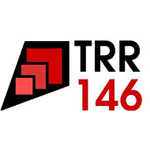
Seminar über Theorie der kondensierten Materie / TRR146 Seminar
Sept. 28, 2016 at
1:15 p.m.
in
Medienraum
F. Schmid
friederike.schmid@uni-mainz.de
P. Virnau
virnau@uni-mainz.de
L. Stelzl
lstelzl@uni-mainz.de
Thermodynamics of freezing and melting - analytical theory and the interface pinning method
Dr. Ulf Pedersen (Roskilde University, Denmark)
Freezing of liquids and melting of crystals are well known by laymen and are fundamental in many areas of the sciences. I will present a theoretical framework for the thermodynamics of freezing and melting [Nature Comms. 7, 12386 (2016)]. The theory is analytical for systems where pair potentials are differences of two inverse power laws - e.g. the 6-12 Lennard-Jones model. Thermodynamic properties of the crystal and the liquid at a single state-point allow one to predict the coexistence pressure as a function of melting temperature, as well as the variation along the melting/freezing lines of quantities such as the reduced crystalline vibrational mean-square displacement (the Lindemann ratio) or the liquid diffusion constant. The fundamental assumption is hidden scale-invariance of liquid and crystalline states. Hidden scale-invariance is non-trivial and only applies for a class of systems including metals [PRB 92, 174116 (2015)], van der Waals bonded molecules and polymers. The analytical theory is validated by computer simulations of the 6-12 Lennard-Jones model using the interface pinning method [PRB 88, 094101 (2013); JCP 139, 104102 (2013)]. I will also give an overview of using this method for computing solid-liquid coexistence point and kinetic coefficient of crystal growth.
B